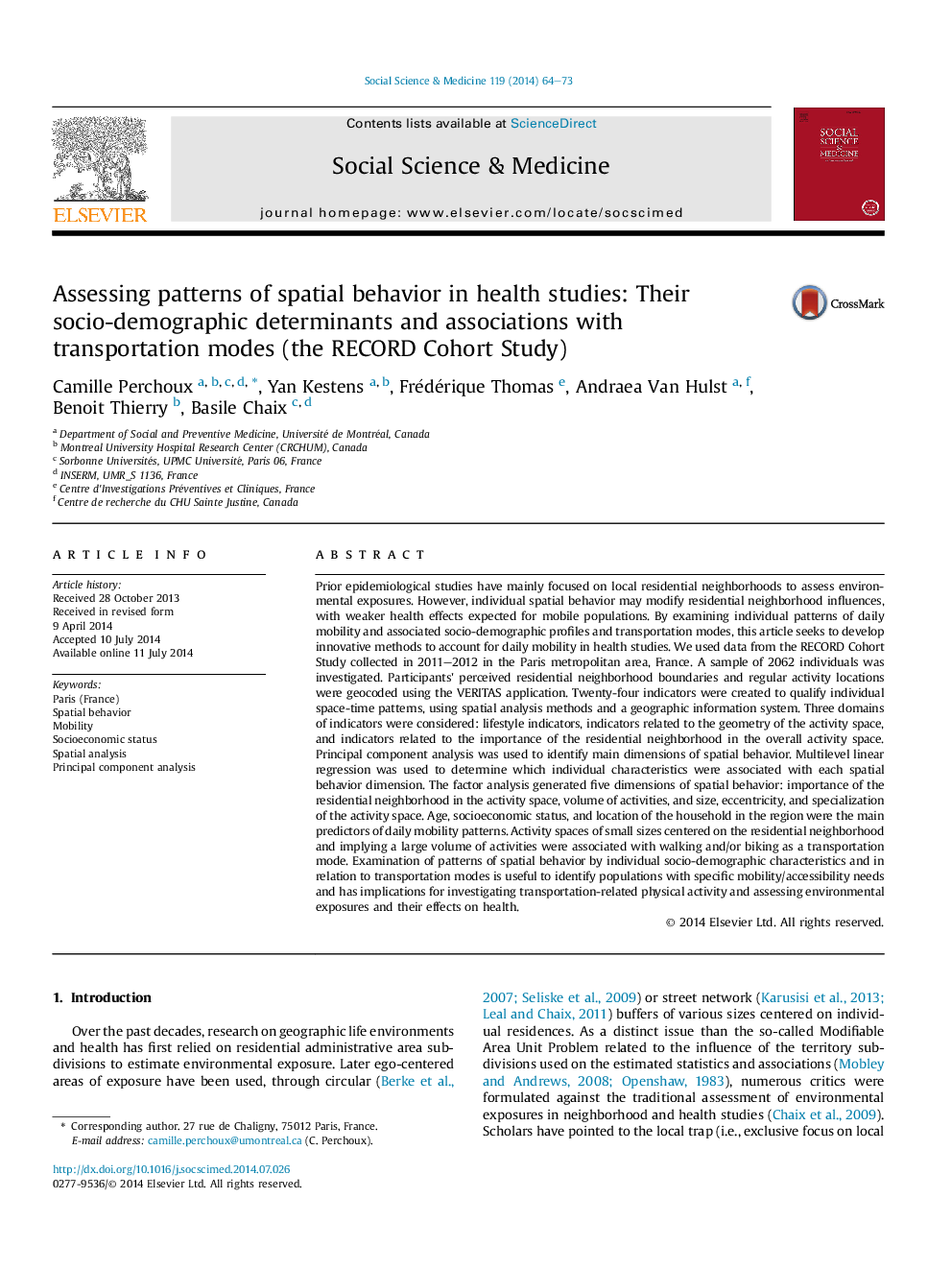| کد مقاله | کد نشریه | سال انتشار | مقاله انگلیسی | نسخه تمام متن |
|---|---|---|---|---|
| 7334428 | 1476049 | 2014 | 10 صفحه PDF | دانلود رایگان |
عنوان انگلیسی مقاله ISI
Assessing patterns of spatial behavior in health studies: Their socio-demographic determinants and associations with transportation modes (the RECORD Cohort Study)
دانلود مقاله + سفارش ترجمه
دانلود مقاله ISI انگلیسی
رایگان برای ایرانیان
کلمات کلیدی
موضوعات مرتبط
علوم پزشکی و سلامت
پزشکی و دندانپزشکی
سیاست های بهداشت و سلامت عمومی
پیش نمایش صفحه اول مقاله

چکیده انگلیسی
Prior epidemiological studies have mainly focused on local residential neighborhoods to assess environmental exposures. However, individual spatial behavior may modify residential neighborhood influences, with weaker health effects expected for mobile populations. By examining individual patterns of daily mobility and associated socio-demographic profiles and transportation modes, this article seeks to develop innovative methods to account for daily mobility in health studies. We used data from the RECORD Cohort Study collected in 2011-2012 in the Paris metropolitan area, France. A sample of 2062 individuals was investigated. Participants' perceived residential neighborhood boundaries and regular activity locations were geocoded using the VERITAS application. Twenty-four indicators were created to qualify individual space-time patterns, using spatial analysis methods and a geographic information system. Three domains of indicators were considered: lifestyle indicators, indicators related to the geometry of the activity space, and indicators related to the importance of the residential neighborhood in the overall activity space. Principal component analysis was used to identify main dimensions of spatial behavior. Multilevel linear regression was used to determine which individual characteristics were associated with each spatial behavior dimension. The factor analysis generated five dimensions of spatial behavior: importance of the residential neighborhood in the activity space, volume of activities, and size, eccentricity, and specialization of the activity space. Age, socioeconomic status, and location of the household in the region were the main predictors of daily mobility patterns. Activity spaces of small sizes centered on the residential neighborhood and implying a large volume of activities were associated with walking and/or biking as a transportation mode. Examination of patterns of spatial behavior by individual socio-demographic characteristics and in relation to transportation modes is useful to identify populations with specific mobility/accessibility needs and has implications for investigating transportation-related physical activity and assessing environmental exposures and their effects on health.
ناشر
Database: Elsevier - ScienceDirect (ساینس دایرکت)
Journal: Social Science & Medicine - Volume 119, October 2014, Pages 64-73
Journal: Social Science & Medicine - Volume 119, October 2014, Pages 64-73
نویسندگان
Camille Perchoux, Yan Kestens, Frédérique Thomas, Andraea Van Hulst, Benoit Thierry, Basile Chaix,